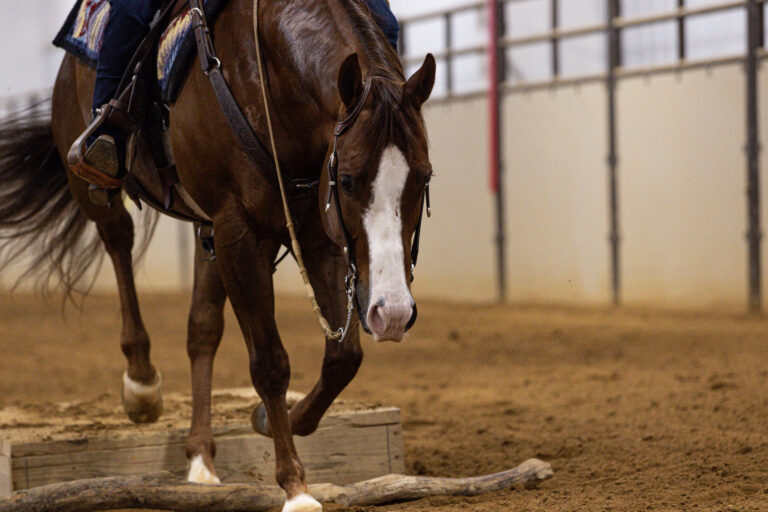
1. A soft-tissue injury most commonly occurs when a horse’s tendon or ligament…
A) is overheated.
B) contracts too quickly.
C) is stretched beyond capacity.
2. True or false: A serious soft-tissue injury can be even more devastating for your horse than a bone fracture.
T / F
3. Hand walking is typically an important part of the rehabilitation of a tendon or ligament injury because it stimulates new tissue regeneration.
T / F
4. True or false: The suspensory ligament, one of the most commonly injured soft-tissue structures, shows considerable heat and swelling when it’s hurt.
T / F
HOW’D YOU DO? (Answers below.)
1. C is correct. The too-far stretching causes the fibers within the tendon or ligament to tear. Such injuries can be the result of a sudden trauma (like stepping in a hole or twisting during a sudden move). Soft-tissue injuries can also occur as the result of repetitive movement that causes gradual weakening and an eventual tear.
[RELATED: Keep him sound with these do’s and don’ts.]
2. T is correct. Soft-tissue injuries can be debilitating, especially for a performance horse. Soft tissues such as tendons and ligaments not only heal slowly, they’re also often weakened after healing—meaning they can be easily reinjured.
3. T is correct. Hand walking usually is recommended during the second stage of healing, as tissues are regenerated. A scaffolding forms across torn fibers that then supports the collagen fibers that will be laid down to fill the injury.
Book: Back to Work: How to Rehabilitate or Recondition Your Horse, by Lucinda Dyer.
Products we feature have been selected by our editorial staff. If you make a purchase using the links included, we may earn a commission. For more information click here.
4. F is correct. In fact, an injured suspensory typically shows no sign of heat or swelling because of limited blood flow through the structure. It may also cause only subtle, intermittent signs of lameness, which can result in the injury going unrecognized until the ligament is severely damaged.
[FOR MORE vet’s advice on soft-tissue troubles.]
Hey! Not already receiving H&R’s fun and informative newsletter? Sign up right now for The Ride. It’s free!






